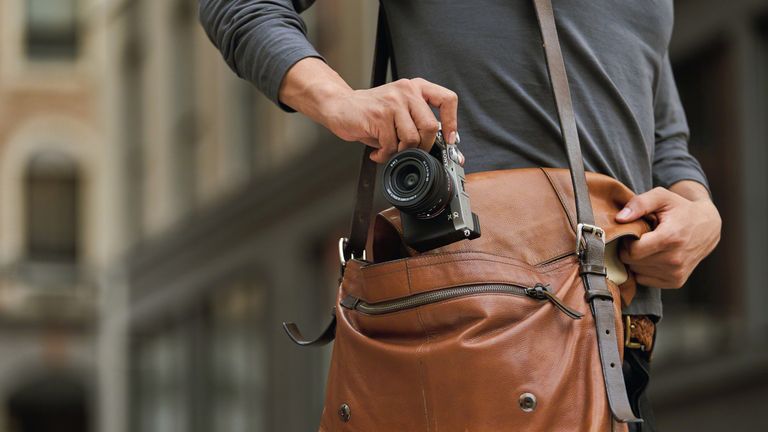There’s never been more choice in the mirrorless camera market. Although there’s still plenty to be said for the best DSLRs, if you want the latest tech, then mirrorless is where you need to be.
When it comes to competition, there’s also far more choice in the mirrorless market too, with more companies attempting to get your business. For DSLRs, you’re pretty much split between Canon and Nikon, but for mirrorless, you’ve not only got those two big players, but you’ve also got Sony, Fujifilm, Panasonic, and Olympus also trying to grab your attention.
Certain high-end specifications are only found in mirrorless models, such as 20fps or faster shooting, so certain types of subjects are better suited to using mirrorless models.
At first Canon and Nikon were a bit reticent to jump on board with mirrorless, clinging on to DSLR for longer than we’d have liked to have seen. But it’s safe to say that with recent additions to their respective line-ups, the competition is fiercer than ever.
With Nikon, you’ve got the impressive Z system which now boasts six different models (four full-frame and two APS-C), while Canon now has a range of different mirrorless models in both sizes of sensor. Its recent set of high-end cameras have really impressed, so it was arguably worth the wait.
Of course, while the “big two” - or at least the traditional big two - were dragging their feet a little bit, other big names in the tech market have been busy releasing a whole slew of models which may be more up your street.
Sony has been extremely innovative, especially in the full-frame market for a number of years, while it’s Panasonic who kicked off this whole mirrorless revolution in the first place with its Micro Four Thirds models. Lately, Panasonic has been concentrating on full-frame too, but there’s still plenty of options in its smaller format.
Meanwhile, Fujifilm offers beautifully retro cameras - which also pack a powerful punch - in the APS-C format, as well as exciting medium-format options for those who have a hefty budget to work with.
Lastly, there’s Olympus - recently sold and renamed OM Digital Solutions - which have a number of intriguing options for a variety of different consumers, and look set to release some more products in the coming year.
- Best compact camera
- Best action camera
- Best DSLR
- Best instant camera
- Best travel camera
- Best camera for kids
With all this choice available, choosing just one model as the “best mirrorless camera” is by no means easy. That said, if we’re talking about well-performing all-rounders, then safe bets include the Canon EOS R6, Nikon Z6 II and the Sony A7 IV.
For those who are determined to go full-frame but perhaps don't have too healthy a budget, then look for older or lesser-specced models, such as the Sony A7 III and the Nikon Z5. If portability is your main concern, then APS-C and Four Thirds models are more likely to appeal. From those available today, we’re big fans of the Fujifilm X-T30 and the Nikon Z50, both of which ooze retro charm.
Perhaps action and wildlife is your thing. Aside from the super-expensive pro-level cameras on the market, other great performers in this area include the Fujifilm X-T4 and the Olympus OM-D E-M1 X.
How to choose the best mirrorless camera for you
As you’ve no doubt guessed by now, there’s a huge amount of choice in the mirrorless market. We’ve split our list below into cheaper / more affordable options, and more expensive options.
Think carefully about how much you can afford to spend. While it’s true that cheaper doesn’t necessarily mean terrible, it’s also generally the case that if you can spend a little more now, you’re less likely to outgrow your camera in the short term. That said, there’s no use paying for high-end specifications that you don’t use - such as super-fast shooting speeds if you only ever shoot static objects.
Size is an important factor to think about too. You’ll usually find that full-frame cameras are the largest, with Micro Four Thirds models the smallest. APS-C models generally sit in between. If you’re looking for a camera for everyday adventures and travel, then sacrificing image sensor size for portability may well be worth it.
Other features to think about include the quality of the inbuilt electronic viewfinder, 4K video recording, a tilting or articulating screen and inbuilt connectivity options.
Keep on reading to see those which we recommend.
Best mirrorless camera under £1500
Looking for something a little more affordable? These are the best mirrorless cameras under £1,500:
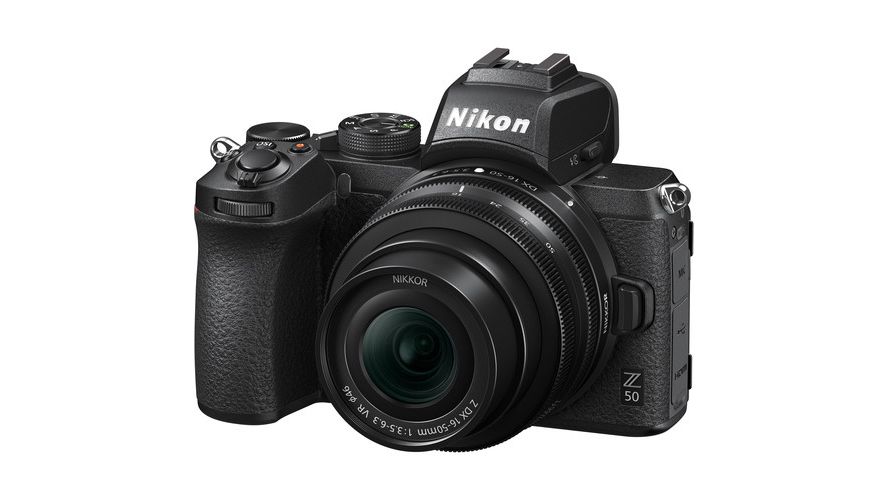

After the success of the Z6/Z7 full-frame mirrorless models, it makes sense that Nikon would start chasing the much larger enthusiast market. The Z50 does just that by shrinking down all the best bits from the Z range into a more affordable package.
It does that by including a smaller (APS-C) sensor, allowing Nikon to make a smaller overall body. To achieve that, some sacrifices have been made - including removing the joystick and the top-plate LCD, but the engineers have done a pretty smart job of ensuring that handling is still well-balanced. Another trade off is a lower resolution, smaller viewfinder, but if you’ve never used anything else you won’t be disappointed.
That’s not to say that the camera is perfect. Only having a single card slot is a shame, while the native lens range for now is a little bit limited. With more lens releases planned for the next year or two, you shouldn’t have to wait too long for the Z50 to catch up with its rivals on that front, though.
Overall, this is a fantastic APS-C model which is ideal for travel and everyday shots, giving you much of the benefits of the full-frame Z models, but at a much more affordable price.


Touted as the ultimate mid-ranger camera, Fujifilm has given its X-S10 a wealth of interesting, useful and exciting specifications. For your cash, you get in-body image stabilisation, uncropped 4K video and a well-performing sensor.
Other enticing features including 20fps shooting, an attractively made and well-handling body, and compatibility with a good range of lenses. In short, it’s the ideal camera for those who like to shoot just a bit of everything and want to make their way into a good all-round ecosystem without spending a fortune for the initial outlay.
Since we can’t possibly have everything in life, there are a couple of compromises to be made. Although 20fps (or up to 30fps with a crop) is available, AF tracking could be better - and indeed it is on some Sony models. If you never or rarely shoot moving subjects, this won’t be a huge problem, but if you're keen on sports and wildlife it’s something to consider.


In a sea of full-frame giddiness, Fujifilm also brought out its latest APS-C model this year, in the shape of the X-T3.
Fujifilm is very much committed to this format, arguing that it delivers the best compromise between size and image quality – and they’ve certainly got a fair point.
Having a sensor of this slightly smaller size means that you don’t have to lug around heavy lenses and accessories, while it being bigger than the even smaller Four Thirds still leaves you with cracking image quality.
Wonderful images aside, there’s plenty of other things to like about the X-T3, including great autofocusing, fast frame rates, an impressive array of 4K video features and of course, this being Fuji, beautiful looks.
On the downside, in-body image stabilisation is missing (pick up an X-H1 if you want that), battery life could be better and the screen tilts three ways, rather than fully articulating.
Still – in a world obsessed with full-frame, we’d be more than happy to pack this in our kit bag, and do our backs a favour in the process.
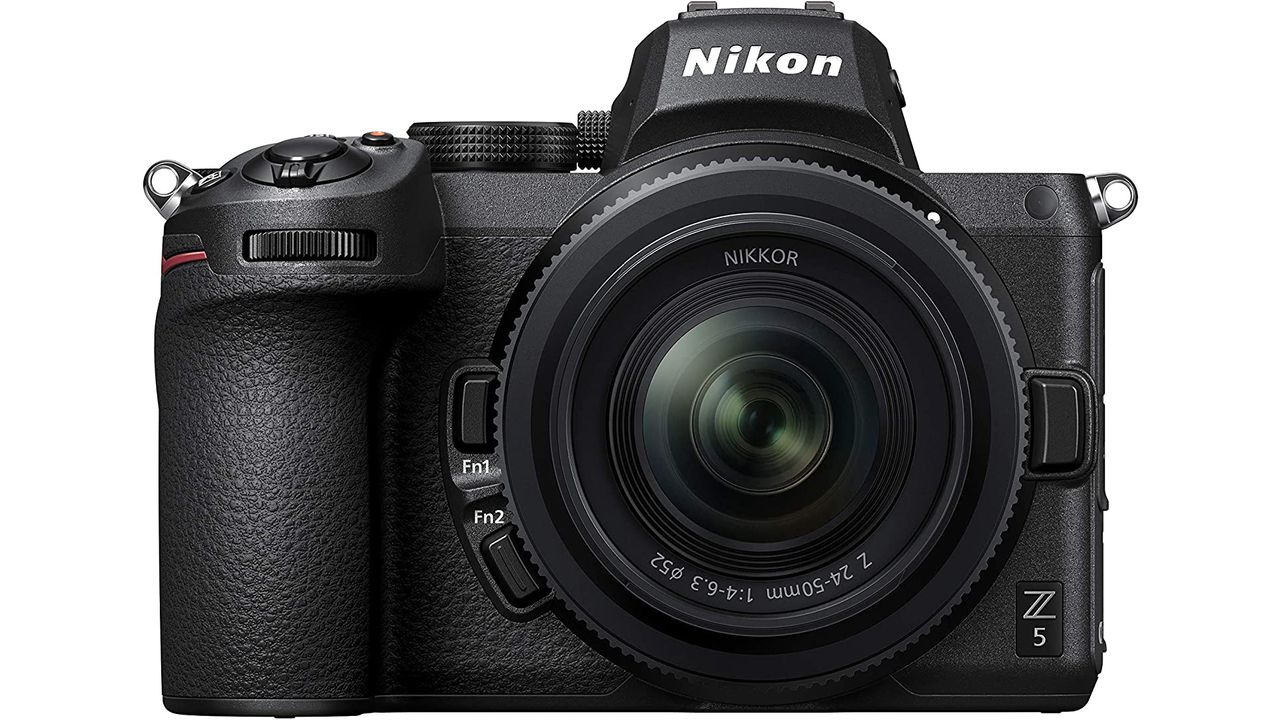

If you’re looking for your first full-frame camera, the Z5 makes a lot of sense. Nikon has taken the same form-factor as its popular Z6 camera and made a more affordable version by compromising on some key features.
So, while you get a 24 megapixel full-frame sensor, a nicely ergonomic body design and excellent electronic viewfinder, which couples with an inbuilt image stabilisation system and reliable AF, you do have to make sacrifices elsewhere.
There’s cropped 4K video and a fairly slow maximum frame rate for action and wildlife shooting - but if neither of those things are something you’re too bothered about, it’s a sensible choice.
For now, there’s not a huge price difference between the Z5 and the Z6, though, which makes the buying decision harder. Until the price gap widens, you might want to consider the Z6 instead.


Harking back to Nikon cameras of old (or Fujifilm cameras of late, perhaps), this retro-styled, lovely looking APS-C Z series camera from Nikon ticks a lot of boxes.
Being small and lightweight, it's ideal for travel, but still packs a reasonable punch in terms of its other specs, such as frame rate, 4K video and an excellent screen and viewfinder combination.
However, you do have to shell out a pretty penny for those good lucks - internally this camera is the same as the much cheaper Nikon Z50, so it really depends on where your priorities lay. It’s also true that there’s not too many specific APS-C lenses for the Z mount just yet - though we can expect more to appear if the system continues to prove popular.


Sony’s latest flagship APS-C model delivers a lot of great specifications on paper, such as 11fps shooting, 4K video recording and speedy focusing. That should make it one of the best cameras on the market, but it is let down by awkward and fiddly handling.
The sensor is also fairly old hat now, having been seen in older models, which rivals can do better things with 4K video. Still, the lens range for Sony’s cameras is huge, and in terms of actual performance, you’ll be hard pushed to match it for actually getting shots in focus more times than not for moving subjects.
Only toting a single UHS-I memory card slot is a strange decision for a flagship model in 2019, and again sees the camera come off worse against its rivals, such as the X-T3 and the Panasonic GH5, which both include double UHS-II (faster) card slots.
For composition, the electronic viewfinder is usable, but better can be found elsewhere (such as the Fujifilm X-T3 again)— but on the plus side, the tilting touchscreen, as well as video and microphone ports, making it a useful camera for vloggers.
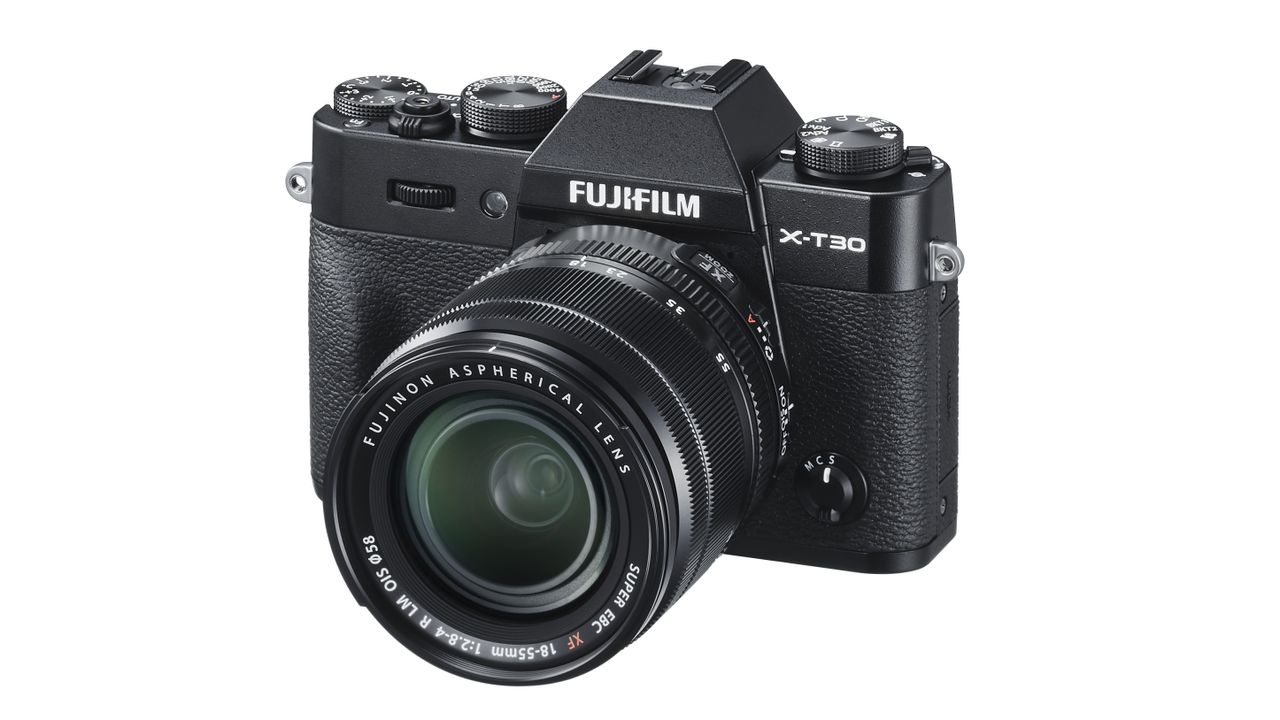

Fujifilm promotes its APS-C sensors as being the perfect compromise between high portability and high image quality. The X series has won plenty of fans over the years for its capability to produce stunning results, and the X-T30 is no different.
Essentially a baby X-T3, it uses the same processor and sensor combination as its elder brother, along with the same autofocusing system and frame rate capability. There are some trade offs for going for this cheaper option - such as a more limited buffer, only one card slot, and slightly fewer body controls - but overall it’s the ideal option for travelling, or for those just looking to save some cash.
One slight complaint is the location of the “Q” button to access the camera’s quick menu - located on the camera’s grip, it’s all too easy to accidentally press it.


Packing the same sensor as the also newly announced 90D DSLR, which is very high in resolution at 32.5 megapixels. As well as that, there’s also a range of action-friendly specifications which make the M6 Mark II appealing to a wide range of different photographers.
You get 14fps with continuous autofocus, or 30fps if you’re happy to shoot 18 megapixels. You also get 4K video recording (which is uncropped) plus a host of nifty autofocusing features.
The biggest drawback of this camera is the lack of inbuilt viewfinder. If you’re from a phone photography type of background, you may not care, but you can always buy an optional detachable one if you do.
Overall, this is a dinky little CSC which is particularly well-suited to travel or those who just want to travel light and is worth investigating.


Sony’s a6000 camera is one of its biggest-ever selling models, thanks to a winning combination of ease of use and affordability. It’s taken Sony a long time to update the model, but in 2019 it brought out the a6100, giving new users a shiny new option to consider instead.
The new model inherits many of the features of more expensive models in Sony’s line-up, making it a good option for those who want some of the latest technology but are still new to the system.
Handling and battery life have also been enhanced, so while the a6100 is not as cheap as its predecessor, it’s likely to be something you’ll stick with for a bit longer as you grow in your skills.


If you don’t want to splash out thousands, but want a solid, capable and even attractively-designed mirrorless camera, then the smaller and cheaper OM-D models might be just the ticket.
The E-M10 Mark IV is available at a good price for those just getting started, and there's a lovely big selection of Micro Four Thirds lenses that you can grow into if you find yourself wanting to expand your skillset.
Although a Four Thirds sensor is smaller than APS-C or full-frame, that gives you expensive of an overall system which is small and light, making it an ideal travel and family camera when you don't want too much bulk. There’s also other useful specs such as a fairly fast frame rate and a good spread of autofocus points.
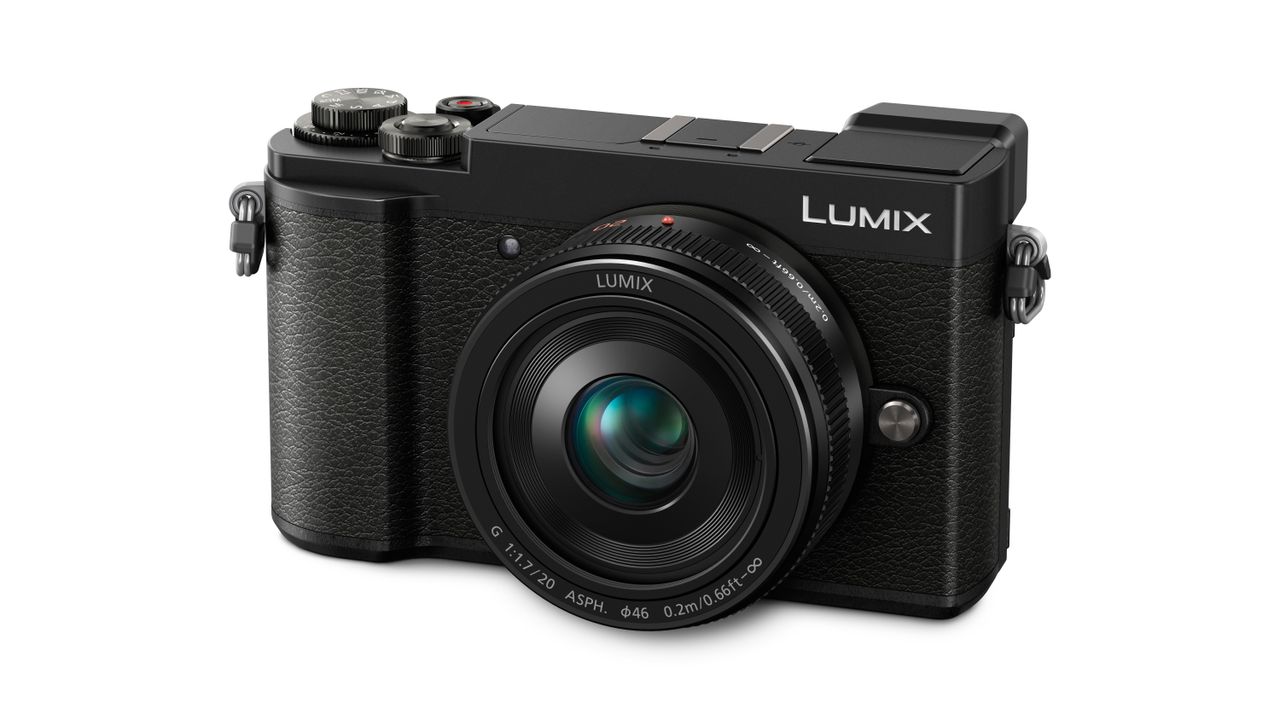

This small and light compact system camera is a great option for those looking to travel light, while keeping all the benefits of a larger sensor (than your phone), and interchangeable lenses.
You get a 20.3 megapixel Four Thirds sensor that performs well in a variety of situations, with an enhanced in-body image stabiliser to help keep your shots as sharp as possible. There’s also a tilting viewfinder, and a tilting screen - that’s not as flexible for selfies as an articulating screen, but is pretty helpful otherwise.
As this is a Panasonic, you get 4K Photo and Video, allowing you to shoot at 30fps and extract stills, a nifty feature that stands it apart from other CSCs.


Aimed squarely at the same customers tempted by a Nikon Z50, Fujifilm X-T30 and Sony A6400, the Olympus OM-D E-M5 Mark III is the company’s mid-range offering. It’s been a long time coming, with the Mark II first appearing almost half a decade ago in February 2015.
We’ve now got a 20 megapixel sensor. Although Four Thirds is smaller than many of those featured on this list, don’t write it off - it means that the overall system is very small indeed. For that reason, if you’re looking for an excellent travel camera that you can tote along with several lenses in your hand luggage - this could be the one for you.
Along with that bonus, you’ve also got a range of other enticing features, such as 4K video recording, 10fps shooting with the mechanical shutter (up to 30fps available with ProCapture), and good spread of AF points. On top of all that, it’s weather-sealed too, so if your travels take you to less than inclement shores, it’s OK.


Panasonic has long been a firm favourite with videographers, and the GH5 is the ideal shooter for those with movie-making aspirations. Don’t let that put you off if you’re mainly into your stills though, as there’s plenty here too to draw you in.
The GH5 saw the debut of 6K Photo, an upgrade from Panasonic’s innovative 4K Photo technology - in short, you can shoot video bursts and extract high-resolution stills - with up to 30 frames per second to shoot from in 6K, or, 60 frames per second in 4K, you can hardly fail to miss the definitive moment.
Handling is a dream, with a chunky and sturdy body which is weatherproof and adorned with plenty of buttons and dials. A fully articulating screen is touch-sensitive, and joined by a bright and clear viewfinder.


Canon may not have set the world alight with its Canon EOS R range of full-frame mirrorless cameras, but the RP, with its (relatively) low asking price is still likely to sell by the bucket-load.
It’s a good compromise of sorts, offering excellent full-frame image quality, but with a few drawbacks, such as a low frame rate (5fps). There’s also the problem of there still being scant native RF lenses available - pick up an adapter if you have a set of Canon EF lenses in your cupboard.
Those interested in shooting movies might also lock onto the EOS RP as an affordable entry into full-frame video shooting, too.
Best mirrorless camera over £1500
Is money no object in your pursuit for ultimate image quality? These are the best mirrorless cameras you can buy:

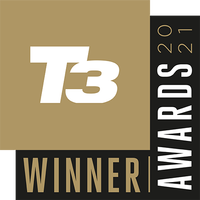
Canon has produced some of the best full-frame mirrorless in recent years, giving professionals and enthusiasts something to really write home about. The most recent is the Canon EOS R3, a super-high end, pro-specced camera that we haven’t included in this list by dint of it being overkill for the average consumer. We’ve also missed out the Canon EOS R5 for pretty much the same reason.
Instead, we’ve included the Canon EOS R6, a superb all-rounder which is well-suited to the hobbyist photographer who likes to shoot a wide variety of subjects.
A good example of that is the best-in-class autofocus which easily picks out eyes and follows them around the scene for the best results. And it’s not just for humans either, it can also track animal eyes making it ideal for pet and wildlife photography. Other functions such as 20fps silent shooting, a fully-articulating LCD screen and well-performing sensor make the R6 really stand out.
When it was first released, the Canon R6 was plagued somewhat with problems with 4K video (namely that it would overheat in certain conditions), but recent firmware upgrades have gone a long way to fixing the problem so it shouldn’t be an issue for all but the most serious of videographers.


Traditionally pitched as a mid-range “all-rounder”, Sony seems to have taken the A7 range up a gear with the IV iteration.
What that means is you get a heck of a lot of powerful specifications under the hood here, including a high-resolution sensor, excellent handling, good video specs, superb autofocus, and a solid burst shooting capability.
In short, if you shoot a bit of everything, the A7 IV can probably handle it, and handle it well. You’ve also got other improvements including a vari-angle screen (compared to the predecessor’s tilting only variety), and dual card slots which can even accommodate the super-fast CFExpress cards (but doesn’t have to - so no expensive outlay there).
Of course there’s a very literal price to pay for this kind of all-round goodness. No longer the “bargain” it once was, you’ll need a hefty budget to pay for the Mark IV, but, presumably for that reason, Sony has kept the Mark III in the range, so you could always opt for that instead.


While Nikon and Canon are busy twiddling their thumbs (or at least giving that impression) when it comes to serious mirrorless cameras, Sony is taking the market by storm.
The superb A9 is the camera to beat, but if you don’t have a spare 5k lying around, it’s not exactly accessible to most. Step in the A7 III, a fantastic all-rounder available at a much more affordable £2,000. For that cash you get an awful lot of features, including 10fps shooting, a 24.2 megapixel back-illuminated sensor, fantastic 4K video creation and a body which is small and compact.
The overall system is still large - lenses still need to be pretty big to be matched with a full-frame sensor - but otherwise, this is almost the perfect camera for enthusiasts right now.


The Nikon Z6 was an excellent full-frame all-round camera well-suited to lots of different users who may be shooting a wide variety of subjects.
Some niggles were found in the original model, some of which has been rectified for its replacement, the Z6 II which is now found in our list. You get a boost to autofocusing with animal eye/face detection and the addition of a secondary EXPEED 6 processor to give updates which include a bump in frame rate.
On a practical level, it’s the addition of a secondary card slot which is perhaps of most use - especially given that it's the more ubiquitous SD, so you won't necessarily have to rush to update your memory cards with this expensive format either.
Much of the rest of the Z6 II’s internals are the same as its predecessor. That’s no bad thing, with a well-performing sensor and excellent screen and viewfinder combination being something that’s well-worth keeping. With that in mind, you can also get a bit of a bargain if you plump for the older model too.
- Read our full Nikon Z6 II review


Straying firmly into medium-format territory, the 61MP A7R Iv is aimed squarely at professionals and high-end enthusiasts who want the best camera money can buy.
There’s a range of very advanced technologies crammed into this body, and Sony has spared no innovation in bringing this one to market, but of course it has a high price tag to match.
Although detail and dynamic range is phenomenal from this sensor, there are some downsides to such a high number of pixels - including massive file sizes and a relatively modest frame rate (10fps). It won’t be a camera for everybody, but for those that crave the ultimate resolution, it’s the perfect choice.


When Panasonic debuted its full-frame models a couple of years ago, some were disappointed to see such large cameras considering Panasonic has always been so keenly in favour of travel-friendly products.
Fast forward a couple of years and the company has been keen to address some of the key criticisms of its first full-frame models. The first is the size issue - the S5 is actually smaller than the GH5 Four Thirds model, which is a pretty impressive feat.
You also get an improved autofocus - though there are still others on the market doing a better job - and a good range of other specifications. It’s a little disappointing to only have 7fps shooting, but if you’re not somebody who shoots action all that often, you might not be too worried about that.
Being a company that has always favoured video tech, it’s no surprise to see a good range of video specs in the S5, and there’s no overheating issue to think about either.


Sitting right at the top of Fujifilm’s mirrorless offerings, the X-T4 represents an evolution from the X-T3, but with some appealing upgrades even to existing users.
Adding in image stabilisation to the body, along with a bigger battery and improved autofocus makes this one of the best all-rounders currently on the market.
If your budget is on the lower side though, consider the fact that the X-T4 includes the same sensor and processor combination as its predecessor, so if you could save some serious cash by sticking with the older model.


Medium format certainly isn’t for everybody, but it’s getting more mainstream thanks to Fujifilm’s GFX range.
The GFX50S II is the best example of bringing medium format to more people than ever before yet, marking something which can realistically be considered in lieu of full-frame shooters for certain subsets of photographers.
And that’s exactly who cameras like this is for - you won’t want this if you’re into sports shooting, or you like video. But if you’re a stills photographer who wants the best possible image quality, with rich detail and beautiful colours, then it could be a worthwhile investment - particularly if your subjects of choice are landscapes, portraits and anything else which would benefit from such a set-up.
There was also a time when medium format was the preserve of the tripod-wielding, but now thanks to impressive in-built image stabilisation, you can also expect to use this camera handheld without too much fuss.
This is by no means a cheap camera, but it’s well worth considering if you’ve always been tempted by medium format but avoided it for whatever reason.


Managing to turn the heads of even die-hard Nikon and Canon professional DSLR users, the Sony A9 leads the way when it comes to impressive technology.
If you’re into your sports, wildlife or action photography, being able to shoot at a full resolution 20fps all while tracking focus - and what’s more - completely silently - means you’ll be able to capture those moments that your DSLR-wielding buddies miss.
Other specifications include a 24.2-megapixel full-frame sensor, a viewfinder that manages to stay blackout-free even while shooting at super-fast speeds, and a tilting, touch-sensitive screen.
The biggest drawback here is price, but you do get something seriously impressive for your cash.
Since finding its place in our original list, the Sony A9 has since been superseded by the Sony A9 II. However, since the differences are relatively minor, unless you desperately find yourself wanting the added tweaks, it still makes more sense to go for the older model.
On the same note, the Sony A1 has also recently entered the fray, being an even higher-level model for those with serious photography ambitions - and a massive budget. It's worth checking out, but it’s almost definitely overkill for most.


After years extolling the virtues of the much small Micro Four Thirds system, Panasonic has made the leap into full-frame, joining forces with Leica and Sigma to form the “L Mount alliance”.
There’s two models at launch from Panasonic - the S1 and the S1R, with the latter featuring a higher resolution sensor. For now, the system is fairly limited, with just three proprietary optics from Panasonic and a range of options from Leica and Sigma.
Handling is great, with a large chunky body replete with dials and buttons - this is much bigger than other full-frame mirrorless systems like Nikon’s Z series or Sony’s Alpha series - whether that’s a good thing or a bad thing is likely dependent on your point of view.
It’s early days for this system yet, but it’s interesting to see how it will develop in the coming months or years. If you’re already the lucky owner of some Leica L mount glass, picking up a S1R makes a lot of sense - everyone else might feel the need to wait just a little while for it to bed in.


Rather than presenting a massive overhaul of its original full-frame mirrorless model, Nikon included a series of small - but useful - upgrades for the Z7 II.
So, while it kept hold of some specifications - most notably, the 45.7MP full-frame sensor and excellent viewfinder and screen combination, other things have benefited from a boost. You now get a faster frame rate, better AF tracking (though admittedly still not as brilliant as some other models) and arguably most of the practical use - a secondary card slot.
If you want a fantastic all-rounder and have a decent amount of budget available, then it’s the Z7 II which is the one to go for. If you’ve got a bit less - opt for the Z6 II. And if you’ve got even less still, take a look at the original models, which are still excellent cameras if you’re in need of a bargain.
Nikon now also has the excellent Nikon Z9, which is more suited to sports and action - but we’ve not included it here because of its high price and unsuitably for most ordinary consumers.


While everyone is banging on about full frame, it’s important not to forget about the format that kicked off the mirrorless revolution - Micro Four Thirds.
Step forward the E-M1X, which is Olympus’s latest technical marvel. Offering a huge amount of advantages for professional and advanced enthusiasts interested primarily in sports, wildlife and action photography, it offers great autofocus tracking and astonishing frame rates of up to 60fps (it’s limited to 18fps if you want full autofocus tracking in between shots, though).
Despite its now comparatively small sensor, it’s a large beast - an implemented battery grip has the benefit of facilitating fantastic battery life (especially for mirrorless), but you can’t help but think it misses one of the key advantages of mirrorless - small size.
Still - if wildlife is your thing, it’s certainly worth investigating.
What is a mirrorless camera?
Traditional DSLR (Digital Single Lens Reflex) cameras require a mirror to reflect the light (which comes through the lens) up to the optical viewfinder. As the name suggests, a mirrorless camera is one that doesn’t require a mirror.
In a mirrorless camera you don't have an optical viewfinder. The lens projects the image directly onto the sensor, and you'll see the digital image on the display or on the electronic viewfinder.
Mirrorless cameras, sometimes known as compact system cameras, were historically seen as an alternative to DSLRs.
The absence of a mirror means they're often smaller and lighter than their more traditional predecessors – and while it used to be that the trade off for that size reduction was a loss in image quality, that really isn’t the case any more.
Liked this?
- Best entry-level camera
- Best camera backpack: protect your photography gear
- Best travel tripod: lightweight tripods ideal for travel
